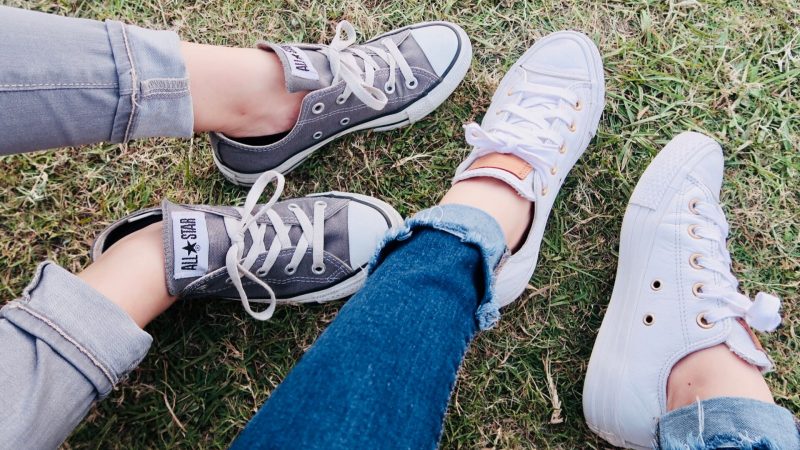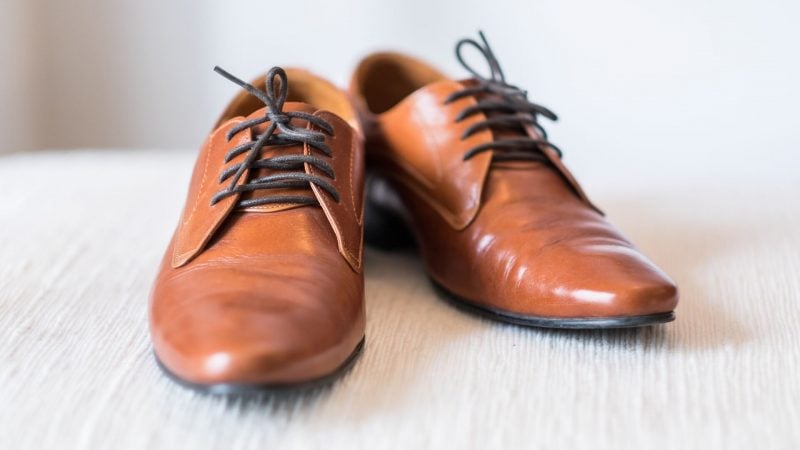Bed bugs are called bed bugs because they prefer hiding in your bed and mattress. However, from time to time, bed bugs take a detour and use other places for hiding. These places include carpets, clothes, bedding, and of course, shoes.
Bed bugs might get in shoes. Getting inside your shoes is a walk in the park for bed bugs but they will only infest your shoes if you don’t use them often. Also, there is a higher possibility of bed bug infestation if the shoes are close to the bedroom or your bed.
Luckily for shoe addicts, bed bugs can’t damage the shoes and can’t live inside if you wear a particular pair of shoes often. That’s more motivation for you to wear them and not to keep them as a decoration in your shoe collection.
In this article, we’re going to go in-depth about bed bugs and shoes and as well cover a step-by-step bed bug shoe treatment.
Can Bed Bugs Travel on Shoes?

Bed bugs are masters at traversing different locations with ease but they prefer doing it on foot. Moving shelters isn’t something bed bugs prefer because they get disturbed, making them leave that harborage almost immediately.
Bed bugs might live inside or walk across the surface of your shoes. When you put on your shoe, those bed bugs inside will get crushed, while the bed bugs on the outside will immediately leave it or you’ll shake them off.
Bed bugs prefer fabric material, as it helps them stick to that surface easier. Most shoes aren’t made of fabric, so shaking them off is easy.
Can Bed Bugs Attach to Shoes?
Bed bugs can walk across any surface and will rarely attach to it unless it’s fabric. Fabric is great because it allows bed bugs to walk more easily and helps them stick their eggs to the surface. Female bed bugs use a greasy substance, similar to saliva, to additionally stick the eggs.
This substance can help them on other surfaces but it works best on surfaces like fabric. Attaching to your shoes is impossible, as any attempt will result in you shaking them off every time you put on your shoes.
Can Bed Bugs Live in Leather Shoes?

If you have a pair of shoes that constantly lie under your bed or somewhere else, bed bugs can get inside, regardless of the material. That being said, leather shoes aren’t a problem for them, although it makes some things harder.
For example, laying eggs. They can lay eggs but sticking them to a leather surface is a lot harder. Walking is also harder, as they can’t properly grip the surface, making them more vulnerable if you notice them.
The key thing with any kind of shoes is that you don’t leave them intact. As soon as bed bugs notice that your shoes are stationary, they’ll not miss a chance to get inside it, especially if your shoes are constantly near you. Later in the article, we’ll talk about bed bug shoe protection.
Can Bed Bugs Live in Shoeboxes?
Bed bugs can live in shoe boxes. However, they will do it only if they are close to you or if the infestation is so large, that they started scattering everywhere in your house.
Shoe boxes represent a perfect harborage for bed bugs. They have flat surfaces that are ideal for moving around and laying eggs but the probability of them living inside is proportional to the distance from you.
If you keep your shoe boxes near your bed, bed bugs will most likely infest them. If not, they will find a more suitable place to live, for example, your bed frame or mattress.
Those who suspect bed bug infestation should check their shoeboxes if they’re somewhere close. Shoe boxes can easily be discarded by packing them in a plastic sealable bag and throwing them outside in the trash.
How to Check Shoes for Bed Bugs?

Bed bugs aren’t microscopic creatures, so they can be seen with the naked eye. Now, as far as shoes go, it’s quite easy to check them for bed bugs.
- The first place to look for is the inside of your shoes. Bed bugs will usually be there, as it’s safe, dark, and shadowy.
- Some bed bugs or their eggs might be in the holes where your shoelaces go through, which is also easy to notice.
When you check the shoes from the outside and inside, it’s not over. If you’ve found bed bugs in there, chances are that they moved on to another pair of shoes or somewhere in the vicinity.
We suggest that you check every pair of shoes and even the place where you keep your shoes. Sometimes, bed bugs can also hide beneath the shoes, especially if you don’t have a flat bottom of the shoe.
If bed bugs or traces of them (feces, eggs) are nowhere to be found, chances are that you don’t have bed bugs in your shoes.
How to Get Rid of Bed Bugs in Your Shoes? | Step-by-Step Instruction
Method 1: Use a Washing Machine
Step 1: Some types of shoes can be laundered and these include cotton, nylon, polyester, PVC, and polyurethane. Before using this method, make sure that your shoes are washable!
Step 2: Use plastic bags to pack your shoes and slowly bring them over to your washing machine.
Step 3: Slowly put the shoes in the machine, alongside the laundry bag or tied-up pillowcase.
Step 4: Put some clothes in the machine, too, to prevent shoes from colliding with the drum.
Step 5: Set your machine to the hottest possible setting where your shoes are allowed to be washed.
Step 6: Wait sixty minutes and pull your shoes out. They should now be clean of bed bugs.
Step 7: In case you’re not sure, you can repeat the process.
Method 2: Use Cold Treatment
Step 1: Pack your shoes in a plastic bag.
Step 2: Set the temperature of your deep freezer to the lowest possible.
Step 3: Put your shoes in the deep freezer.
Step 4: Wait for 48 hours or a couple of days to ensure that every bed bug is killed.
Step 5: Pull out your shoes and check for results. If there are dead bugs, you can repeat this process once again, in case you suspect that there are more bed bugs.
Method 3: Use a Dryer
Step 1: Fill the inside of your shoes with fabrics and towels, to help them dry quicker.
Step 2: Instead of plastic bags, use shoe bags and hang them on the dryer door. This will help your shoes stay in place and avoid damage. Also, plastic bags aren’t suitable for dryers because of the high temperatures.
Step 3: Set the temperature to the highest possible and let the drying cycle finish.
Step 4: Check if there are dead bed bugs.
Step 5: Repeat the process if you think that one time isn’t enough.
WARNING: Don’t put leather shoes in your dryer! This will make your shoes crack easier by dehydrating their leather surface.
How to Protect Shoes from Bed Bugs?
Protecting your shoes from bed bugs is something you want to do the exact same moment you find out about the infestation. Putting your shoes in a shoebox isn’t the wisest idea, especially if there are holes in them.
The most effective method of protection is a sealable plastic bag or perhaps a plastic box that can be sealed completely. If you wear your shoes relatively often, we suggest using a plastic box because it’s much easier to pick them up than it is in the case of a plastic bag.
- DIMENSIONS: 16.5"L x 11"W x 6.8"H -- INSIDE DIMENSIONS: 12"L x...
- MADE IN USA: Our storage bins are proudly crafted in the USA...
- SEE-THROUGH DESIGN: You can easily see what's inside the box...
- STACKABLE STORAGE: Maximize space in your home, office, or...
- PULL HANDLE & BUCKLES: A handy handle on the bottom of the bin,...
With a plastic bag, you have to unseal it and pick up your shoes, then you have to seal it properly again. With a plastic box, you can just open the lid, pick up, and close it. It’s easier and less time-consuming.
Unfortunately, this is the only way you’ll completely protect your shoes, of course, if you seal/close your bag/box properly.
List of Sources
Frye M., Gangloff-Kaufmann J., How to Get Bed Bugs Out of Your Belongings, Integrated Pest Management Program Cornell University
Diseases & Conditions – Bedbugs, Mayo Clinic
Koehler PG, Pereira RM, Pfiester M, Hertz J. (July 2011). Bed bugs and blood-sucking conenose. EDIS. (26 April 2017)
- How to Get Rid of Copperheads | Practical Guide - August 27, 2023
- How to Get Rid of Corn Snakes | What Makes Them Aggressive? - August 27, 2023
- How to Get Rid of Alligators | Safety Measures and Removal Methods - July 16, 2023

